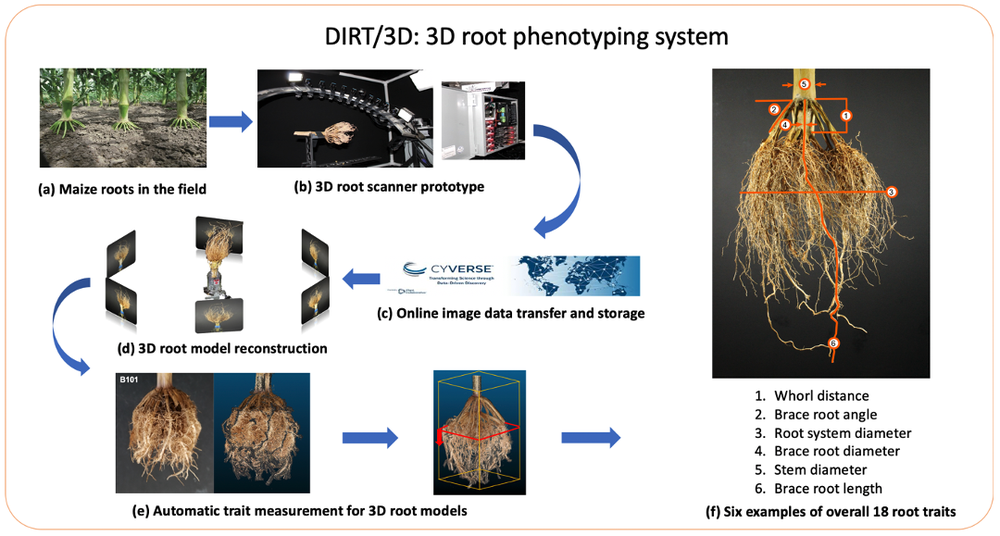
DIRT/3D system
Authors
Liu, S, C Barrow, M Hanlon, JP Lynch, A Bucksch
Source
Plant Physiology, open access link
Abstract
The development of crops with deeper roots holds substantial promise to mitigate the consequences of climate change. Deeper roots are an essential factor to improve water uptake as a way to enhance crop resilience to drought, to increase nitrogen capture to reduce fertilizer inputs and to increase carbon sequestration from the atmosphere to improve soil organic fertility. A major obstacle to achieving these improvements is the bottleneck in the high-throughput phenotyping of field-grown roots. We address this bottleneck with DIRT/3D, a newly developed image-based 3D root phenotyping platform, which measures 18 architecture traits in mature maize root systems. DIRT/3D computed reliably all 18 traits on a test panel of 12 contrasting maize genotypes. The analysis of the maize panel validated traits such as distance between whorls, and the number, angle, and diameters of crown and brace roots. Overall, we observed a coefficient of determination of >0.84 and a high broad-sense heritability of > 0.6 for most traits. Means of the 18 traits and a newly developed descriptor to characterize a complete root architecture distinguished all genotypes. DIRT/3D is a step towards automated quantification of highly occluded maize root systems in the field and will support breeders and root biologists to improved carbon sequestration and food security in the face of the adverse effects of climate change.

